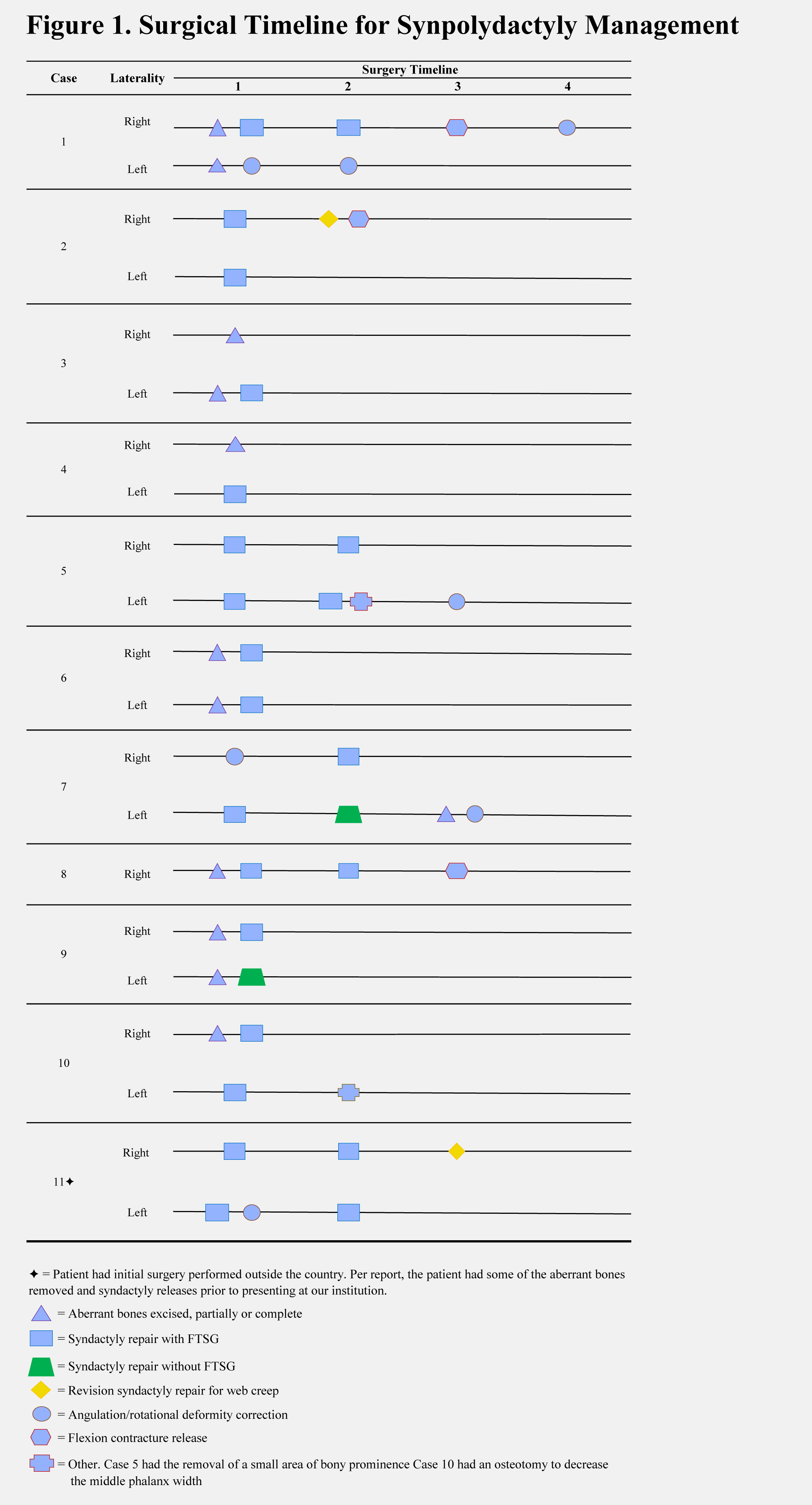An Evolution of the Surgical Management of Synpolydactyly: A Case Series of 21 Hands
Wen Xu, MD MS1; Emily M. Graham, BSN1; Valeriy Shubinets, MD2; Shaun D. Mendenhall, MD1; Benjamin Chang, MD1; Ines C. Lin, MD MSEd1
1 Division of Plastic Surgery, Children's Hospital of Philadelphia, Philadelphia, PA 2 Curtis National Hand Center, Baltimore, MD
Background: Synpolydactyly is a congenital anomaly characterized by syndactyly and partial or complete digital duplication within the syndactylous web. It is a rare condition that occurs much less frequently compared to isolated radial or ulnar polydactyly. As such, limited treatment guidelines exist for this complex condition.
Methods: A retrospective review of synpolydactyly patients was conducted at a large, tertiary pediatric referral center to describe our surgical experience and evolution of management. Demographic data, x-rays, surgical intervention details, and postoperative outcomes were reviewed. The Wall classification system was used to categorize cases.
Results: Eleven patients (21 hands) with synpolydactyly were identified. Seven patients (64%) were Caucasian and seven patients (64%) had at least one first-degree relative who also had synpolydactyly. Four of the patients were siblings. Ten patients had bilateral hand involvement. The Wall classifications were: 7 Type 1A hands, 4 Type 2B hands, 6 Type 3 hands, and 4 uncategorizable hands. Each patient had an average of 2.6 surgeries (range: 1-5), and the group’s average follow-up time was 5.2 years (range: 0.2-12.9 years). The rates of postoperative angulation and flexion deformities were 24% and 38%, respectively, with many of these cases also demonstrating preoperative alignment abnormalities. These patients often required additional surgeries for correction of their angulation or flexion deformity in the form of a wedge osteotomy, capsulotomy/capsulectomy, z-plasty, arthrodesis, and/or tendon lengthening or plication. The rate of web creep was 14% with two patients undergoing revision surgery for web creep correction. Despite these findings, at the time of final follow up, most patients had favorable functional outcomes and were able to engage in bimanual tasks and perform activities of daily living independently.
Conclusions: Synpolydactyly is a rare congenital hand anomaly with a significant degree of variability in clinical presentation. Recently-developed classification systems have facilitated communication amongst care providers. The rates of pre-operative and post-operative angulation and flexion deformities are not insignificant. We have learned to prioritize correcting contractures, angulation deformities, and skin fusion, over simply trying to delete the “extra” number of bones as this may destabilize the digit(s).
Back to 2022 Abstracts

